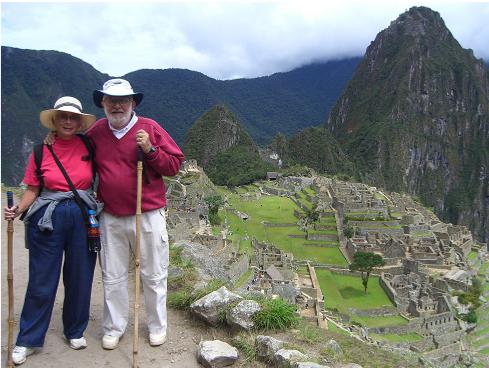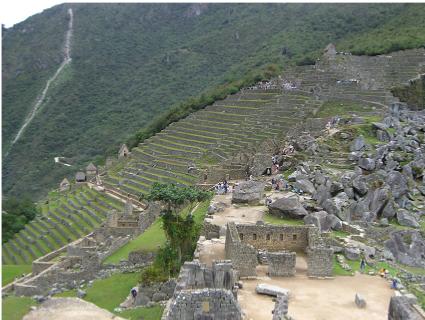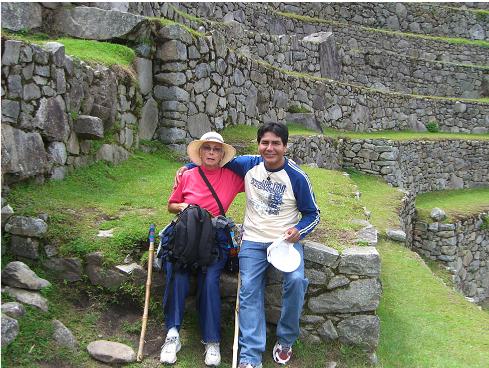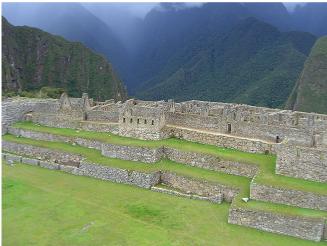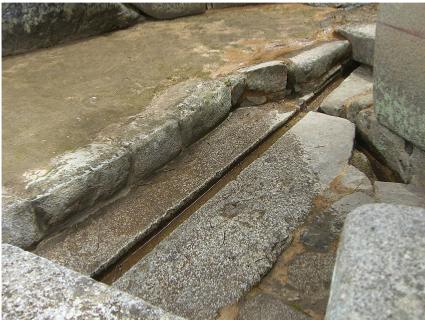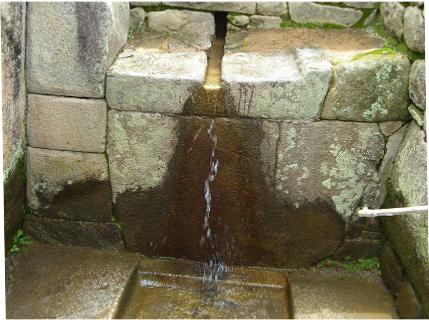Machu Picchu turned out to be an event - a true highlight of the trip. Peru was populated and ruled by the Quechua people until the advent of the Incas. The Incas then became the rulers and the Quechua remained as the populace.
Why these recent people (1200-1500) chose to live high in the Andes is a mystery. The area is impossibly difficult to reach and its rocky terrain doesn't lend itself to agriculture. But the Incas bent the environment to meet their basic needs. To their credit, the views of the mountains and sky are absolutely incredible.
It is thought that Machu Picchu was built as an imperial city . There are structures that are thought to be temples and there are areas for the "common folk". It is built high on the top of a mountain as you can see from the pictures below.
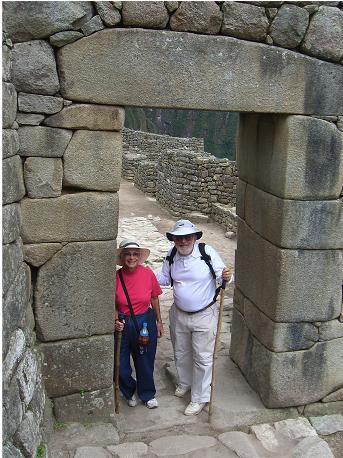
Our trip to Machu Picchu started out a little shaky. We were scheduled for 5:30am pickup because the train was supposed to be at 6:10 from Ollantaytambo. We're packed, ready to go and on our way at 5:30. We get to the area for the train and the road is closed for repair. The picture on the right shows the end of the roadway to the train station. When we get to the station, we find that the train is 6:10 from Urubamba, where we just were and leaves Ollantaytambo at 7:10. No great problem, have a little tea and sit around enjoying the view at Ollantaytambo. The train ride was wonderful and scenic. We arrived at Agua Calientes and transferred to a bus for the trip up the mountain. The bus trip takes about 30 minutes and is a series of sharp switch backs up a steep mountain.
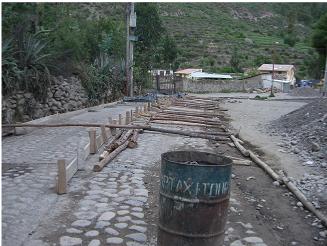
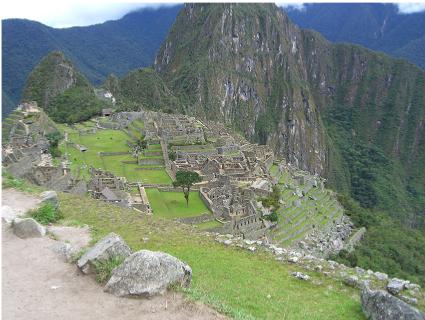
Our guide, Oscar, gave us an extensive tour of the site explaining the temples and the buildings. He particularly stressed how large the stones were and how well they fit together without any mortar between them. They have survived earthquakes, time and weather. Here is a picture of Granny and Grandpa standing in one of the archways. Look how large the stones are and imagine how much they weigh. How did they get them up the mountain and into place?
Machu Picchu is well terraced to prevent erosion. This can be seen in the picture below.
Here are Granny and Oscar, our guide. Oscar is Quechua and VERY proud of his heritage. He guided us around Machu Picchu pointing out all the important sites with explanations of each. Below is a picture of the "common fold" area. The leaders, Incas, were on high and the "common folk" congregated in the large open areas below.
Two pictures of the irrigation system used by the Incas. A simple trough that channeled the water from one level to the next.
